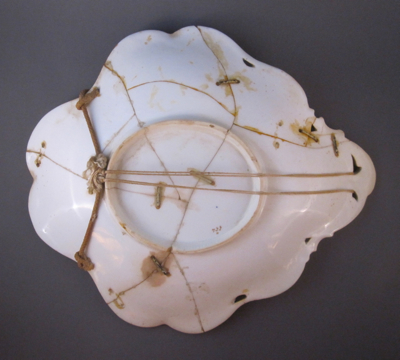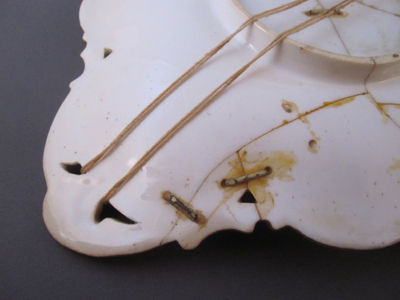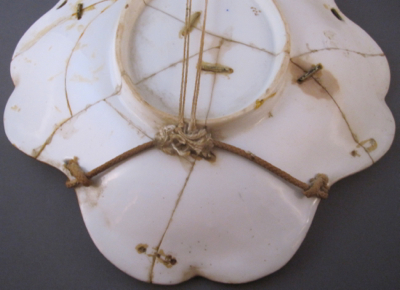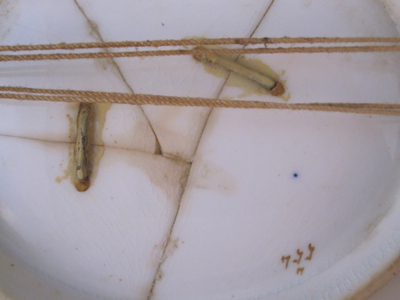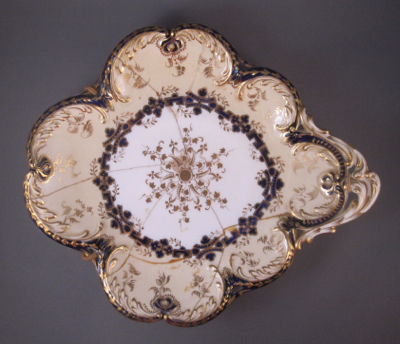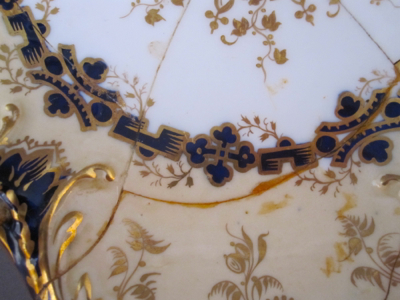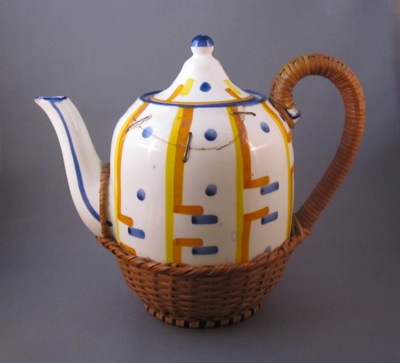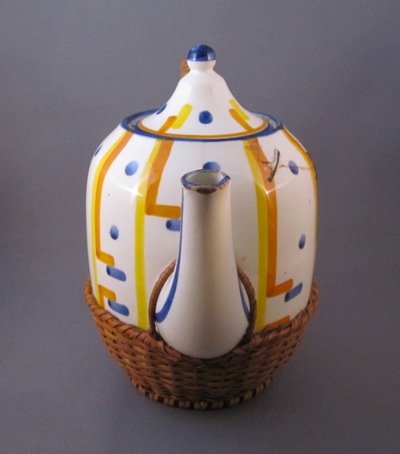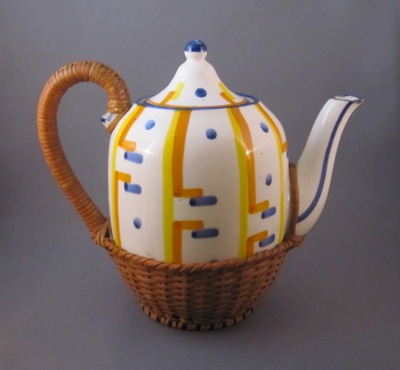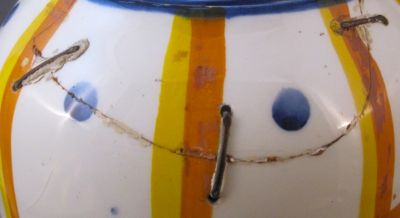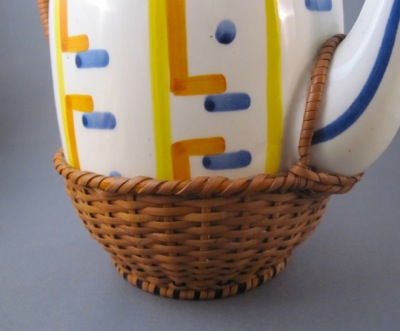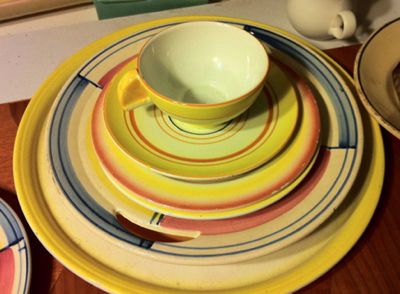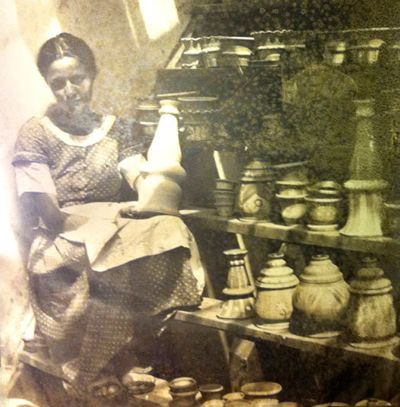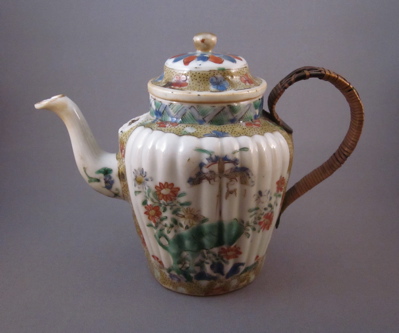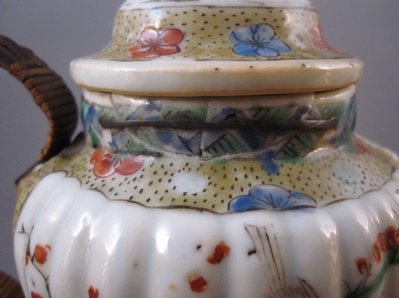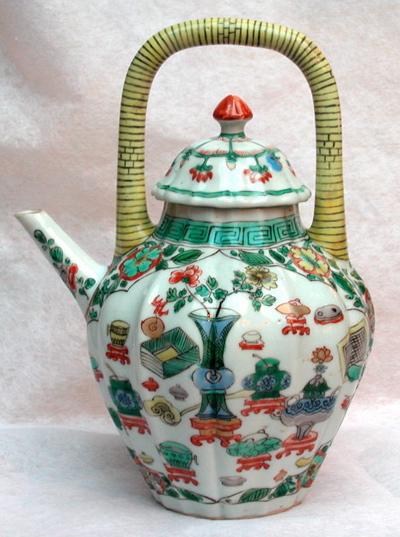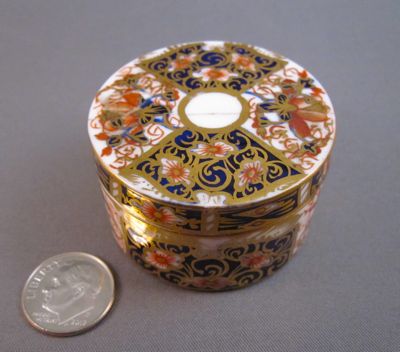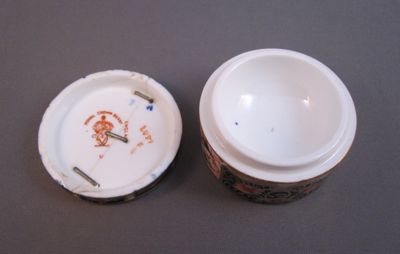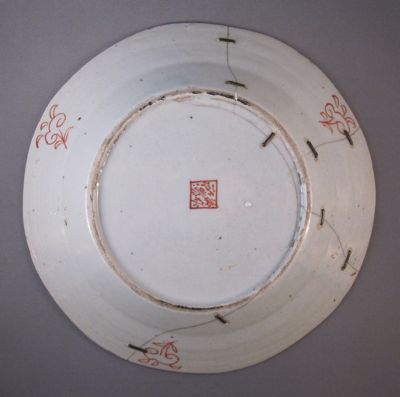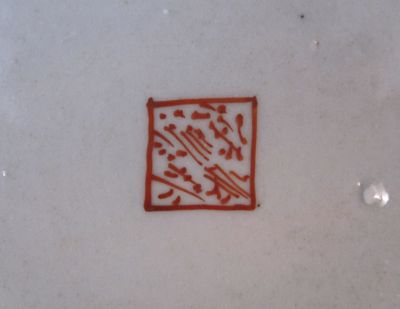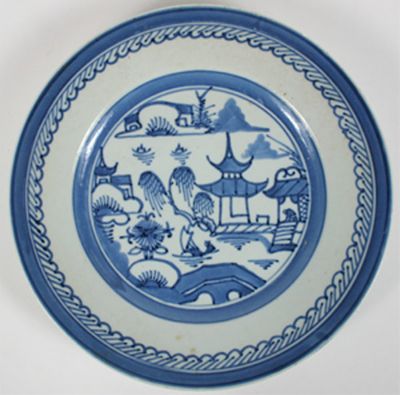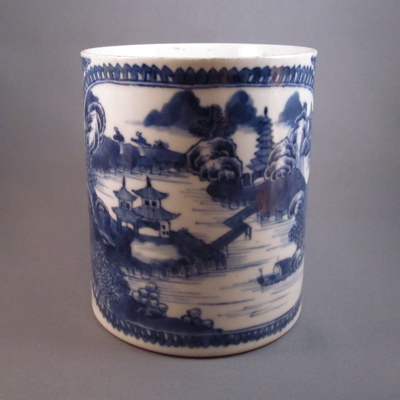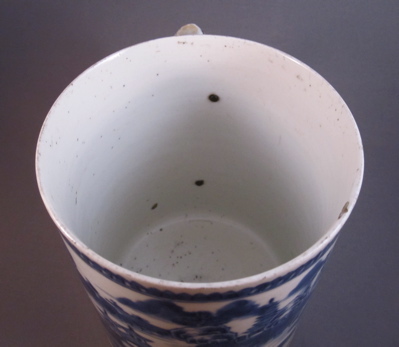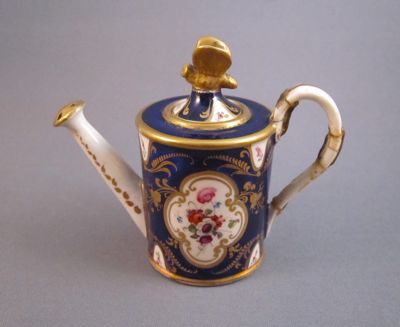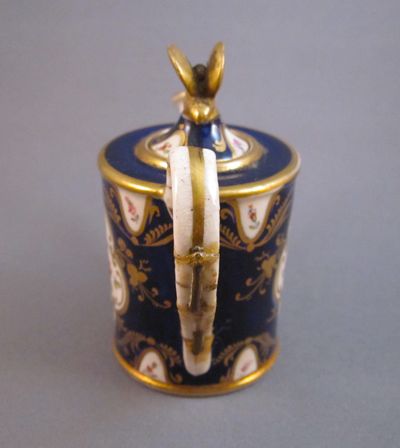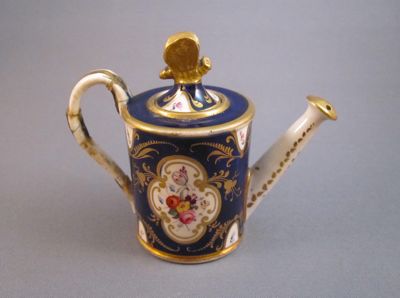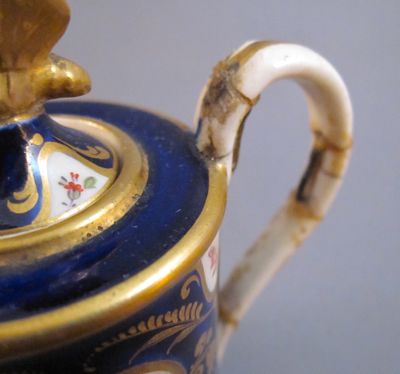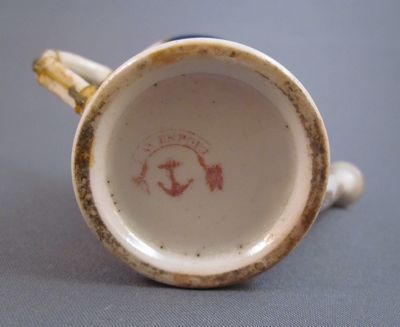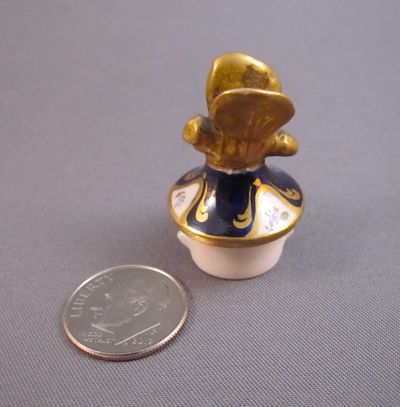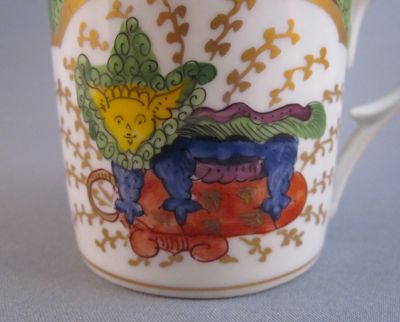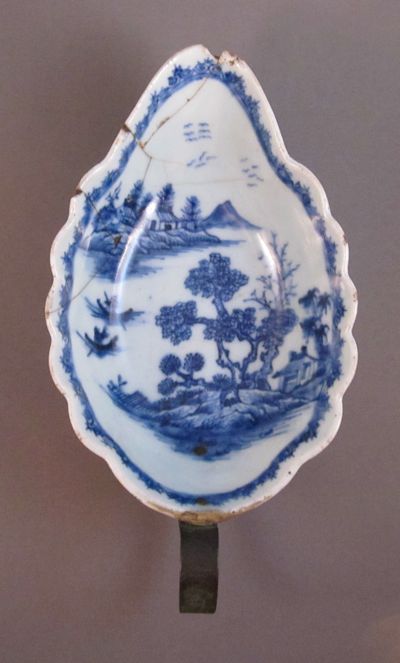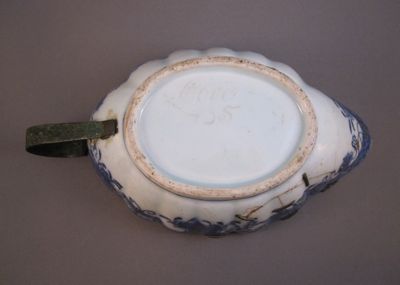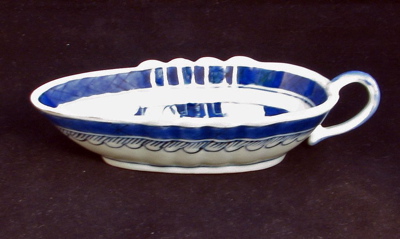In honor of Mother’s Day, I am featuring a dish that only a mother could love. I believe it to be English from the mid 1800s and made of porcelain with hand painted decoration in cobalt, drab and gold. It is marked on the bottom with the numbers 4 over 554 and measures 9″ x 10″. This is truly one of the saddest antiques with inventive repairs I have ever seen, and believe me, it took much inner soul searching just to purchase it. I am breaking with tradition and showing the underside of the plate first. Take a deep breath…this is not going to be pretty.
This dish must have held great sentimental value for its original owner. In order to make it “whole” again after being shattered over 100 years ago, it was professionally repaired using 10 large metal staples, overpainted to mask the unsightly raw material. Sadly, the dish was dropped AGAIN, resulting in the loss of 3 staples and a sloppy glue job, now yellow with age. To add insult to injury, later in life it was bound with a cat’s cradle worth of string and cord, so it could proudly hang on a wall for all the world to see the tenacity of this unlikely survivor.
